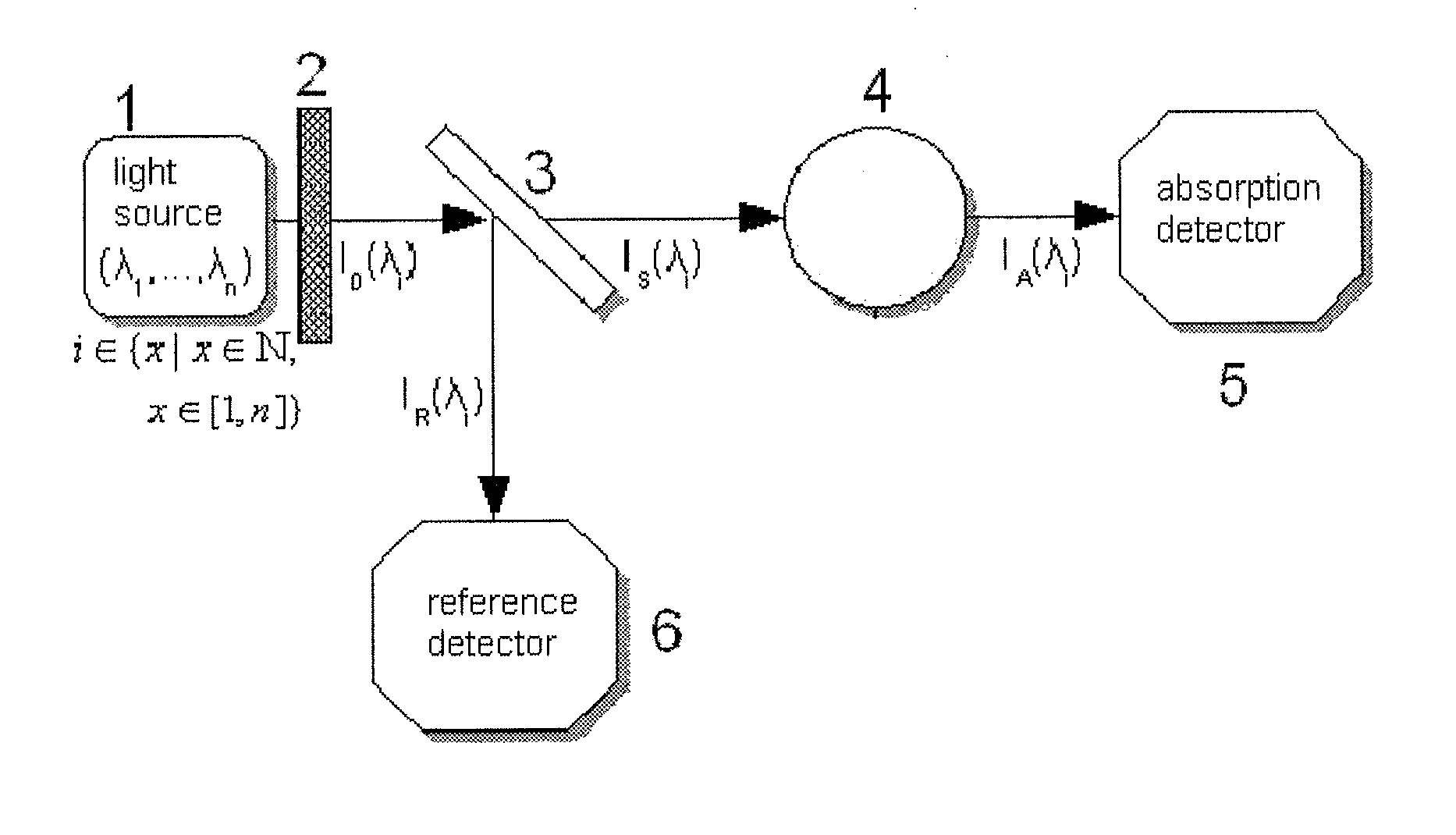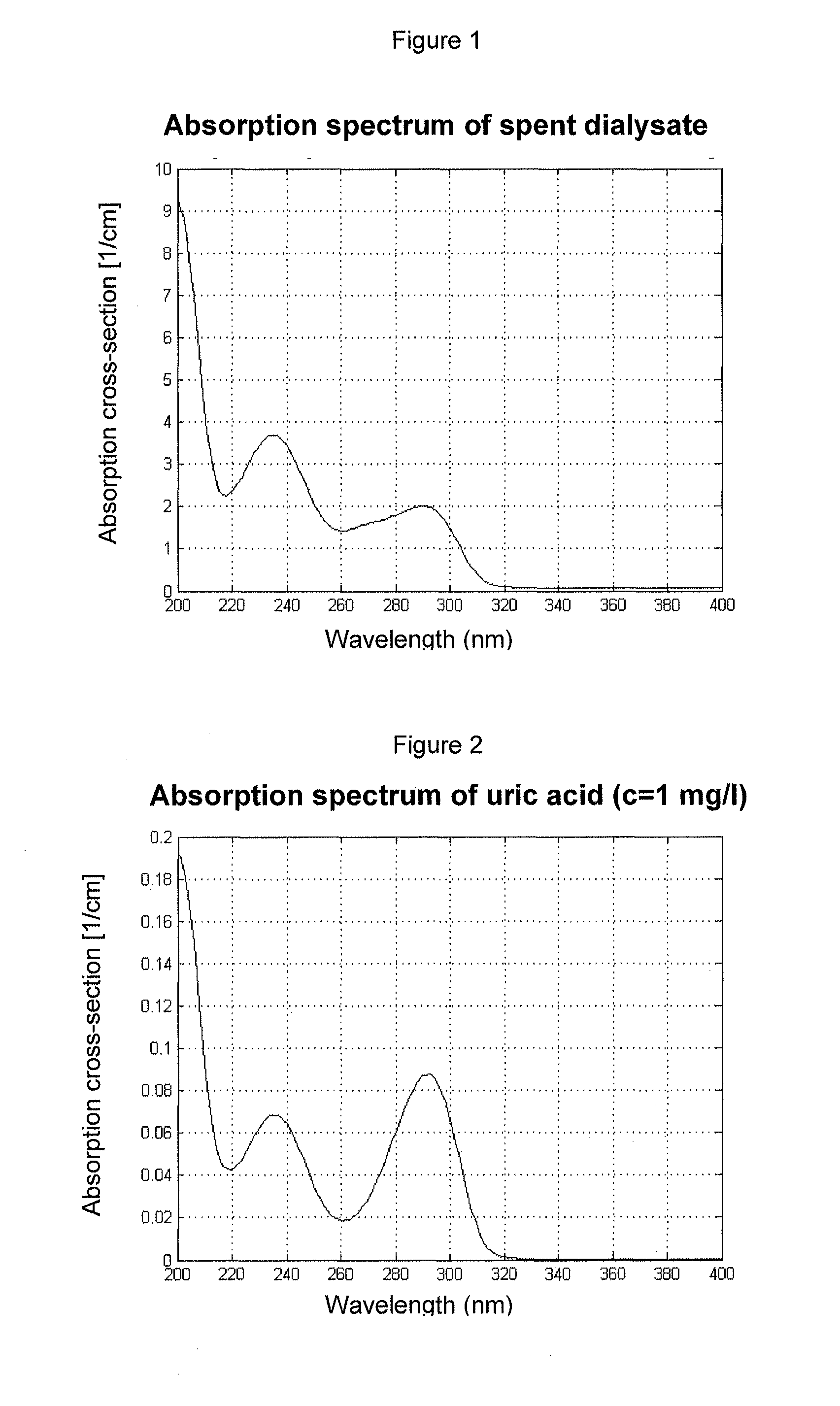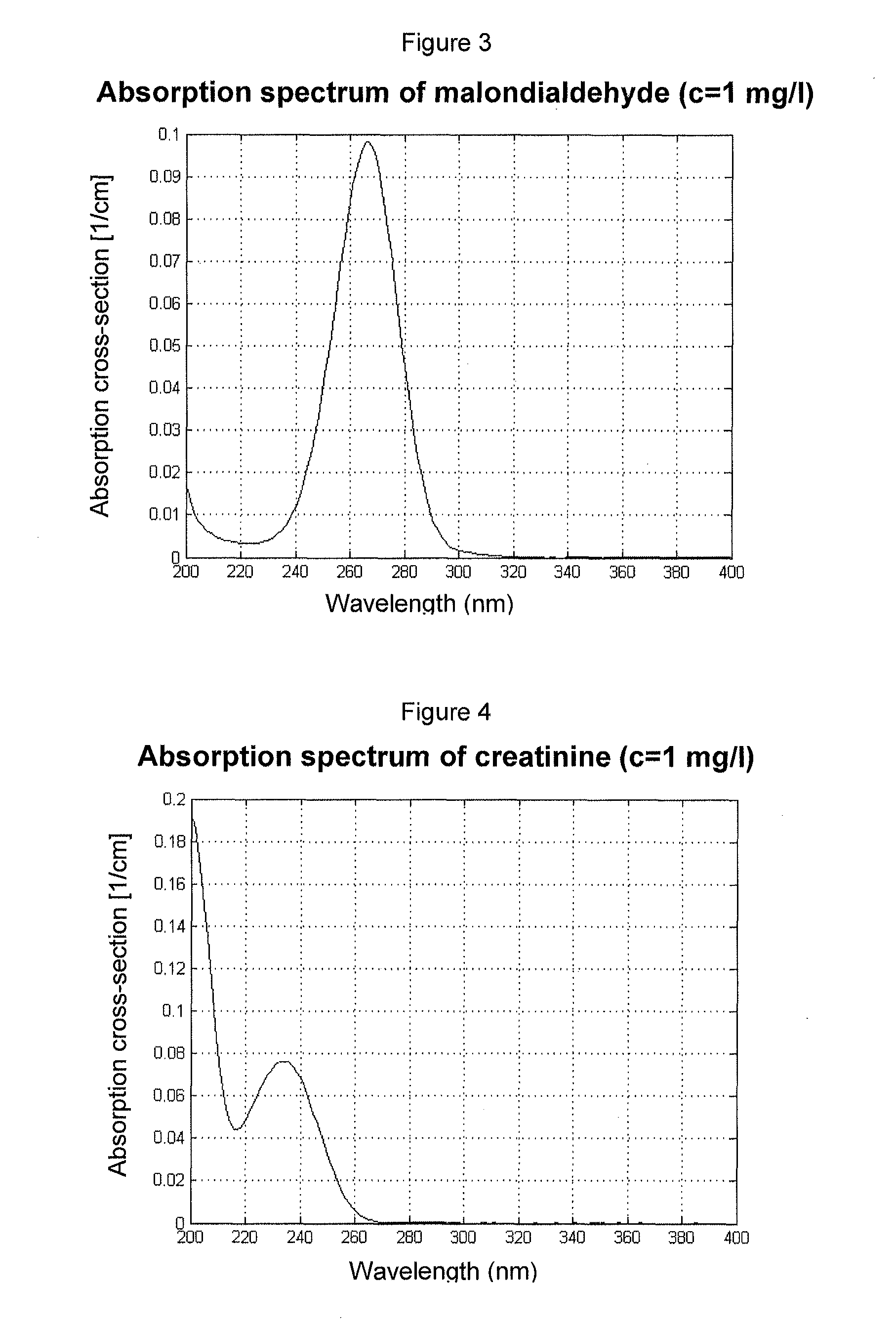Apparatus for extracorporeal blood treatment
a technology for extracorporeal blood and apparatus, which is applied in the direction of suction devices, medical devices, other medical devices, etc., can solve the problems of blood sample taken from patients, process that can take several days, and measurement is distorted in circumstances, so as to prevent aging effects and low load of led
- Summary
- Abstract
- Description
- Claims
- Application Information
AI Technical Summary
Benefits of technology
Problems solved by technology
Method used
Image
Examples
example 1
[0106]The dialysate sample of a patient requiring dialysis was taken 10 minutes after the start of treatment and its absorption in the wavelength range of 200 nm to 400 nm was determined spectrophotometrically. For wavelengths longer than λ=340 nm in this case the absorption is negligible. In the range of λ=340 nm to λ=290 nm, the absorption initially rises sharply, then behaves stably up to ca. λ=260 nm, in order to rise again sharply. At λ=230 nm a local maximum is seen. At wavelengths below λ=220 nm a further increase of the absorption was observed. Dialysate spectra of different patients differ usually in their intensity and the course of the absorption in the range between λ=290 nm to λ=255 nm. During the course remains almost constant in the displayed image in this range, at this point, also a local minimum (for example with Aλ=260 nm=0.5) or a strictly increasing function (for example with Aλ=260 nm=1.5) may exist. FIG. 1 shows the spectrum of dialysate sample from the dialys...
example 2
[0107]The absorption behavior of uric acid at a concentration of c=1 mg / l was determined spectrophotometrically in water for the wavelength range of 200 nm to 400 nm. FIG. 2 describes the absorption behavior of uric acid in the range of λ=400 nm to λ=200 nm qualitatively. Clearly three local maxima at λ=290 nm, λ=235 nm and λ=205 nm are seen, wherein the maximum absorption is at the wavelengths of λ=205 nm and λ=290 nm (Aλ=205 nm=1.5 or Aλ=290 nm=0.7).
example 3
[0108]The absorption behavior of malondialdehyde at a concentration of c=1 mg / l was determined spectrophotometrically in water for the wavelength range of 200 nm to 400 nm. FIG. 3 describes the absorption behavior of malondialdehyde in the range of λ=400 nm to λ=200 nm qualitatively. Clearly a local maxima at λ=266 nm (Aλ=266 nm=1.005) is seen
PUM
 Login to View More
Login to View More Abstract
Description
Claims
Application Information
 Login to View More
Login to View More - R&D
- Intellectual Property
- Life Sciences
- Materials
- Tech Scout
- Unparalleled Data Quality
- Higher Quality Content
- 60% Fewer Hallucinations
Browse by: Latest US Patents, China's latest patents, Technical Efficacy Thesaurus, Application Domain, Technology Topic, Popular Technical Reports.
© 2025 PatSnap. All rights reserved.Legal|Privacy policy|Modern Slavery Act Transparency Statement|Sitemap|About US| Contact US: help@patsnap.com



